Audi V8 classic cars for sale
The Audi V8 marks a milestone in Audi’s evolution, being the first of the brand to feature a V8 engine paired with quattro all-wheel drive and a luxurious set of standard features. Built from 1988 to 1994, this upper-class saloon stands out with galvanised bodywork and robust mechanics, making it a unique contender among German luxury cars of its era.
Suchergebnisse
Zur Zeit sind keine passenden Inserate zu Ihrer Suche veröffentlicht.
Create search alert
Let yourself be notified as soon as a listing is published that matches your search filters.
Audi V8 listing references from Classic Trader
Below you will find listings related to your search that are no longer available on Classic Trader. Use this information to gain insight into availability, value trends, and current pricing for a "Audi V8" to make a more informed purchasing decision.
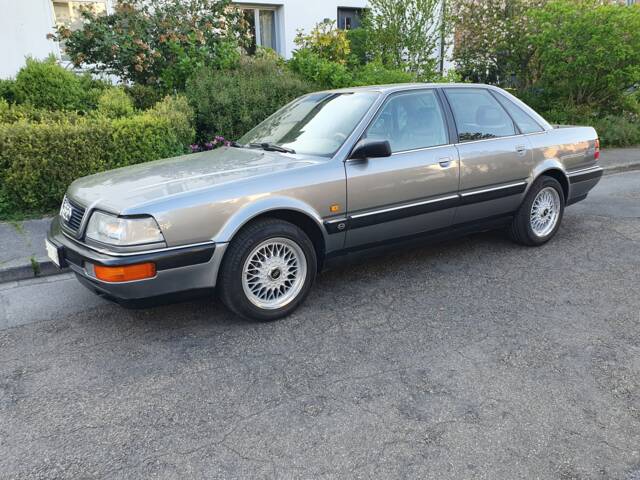
1993 | Audi V8 4.2
Auto für Liebhaber
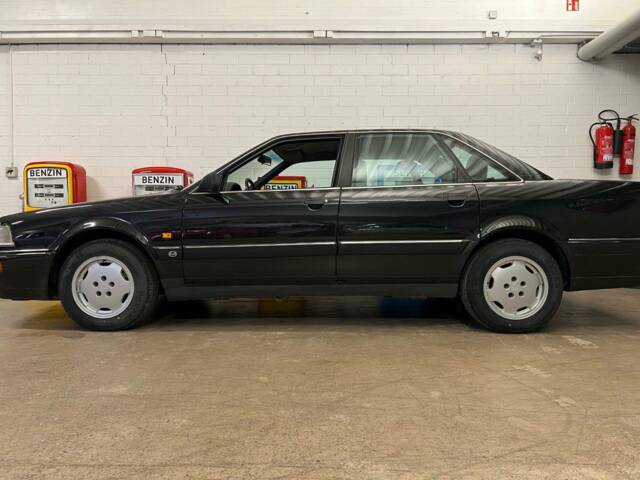
1989 | Audi V8 3.6
Audi V8

1993 | Audi V8 3.6
Zyclam Perleffekt TÜV 11/26
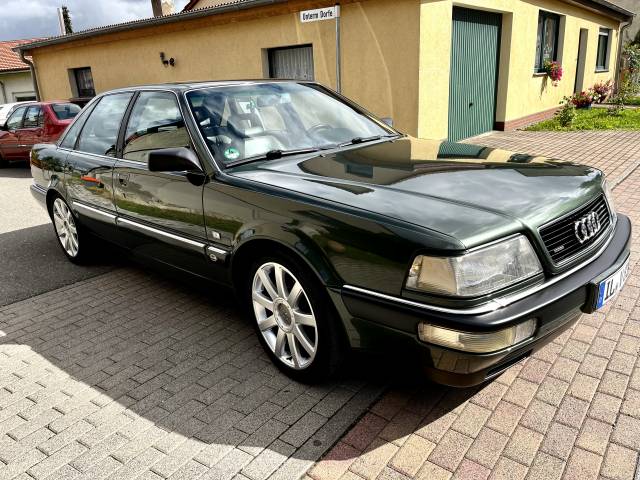
1993 | Audi V8 4.2
Audi V8-Exclusiv-4,2
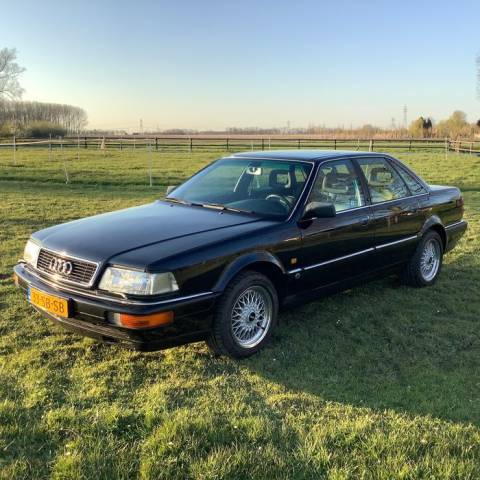
1992 | Audi V8 3.6
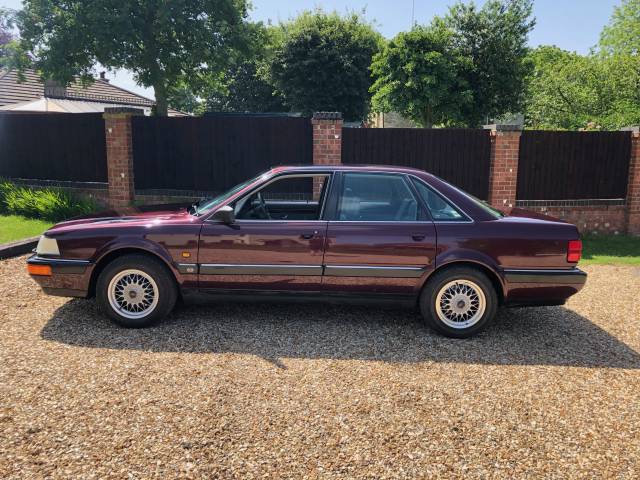
1993 | Audi V8 4.2
Recently recommissioned has been dry stored since 2012

1990 | Audi V8 3.6
V8 D11 3.6 5 - Gang
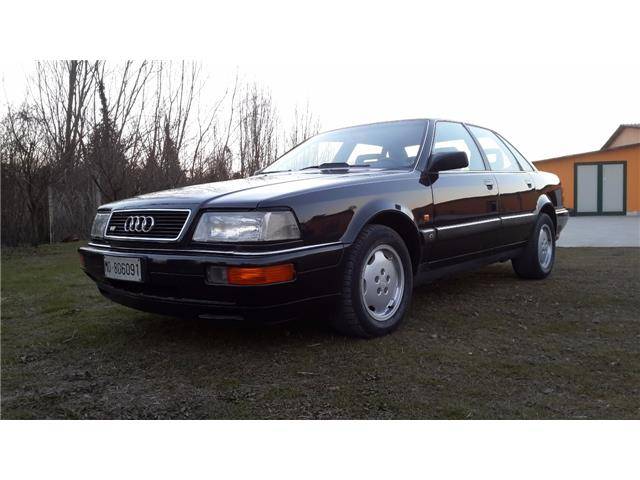
1989 | Audi V8 3.6
Audi 100 V8 3.6 cat automatica Da Collezione

1989 | Audi V8 3.6
Audi 100 V8 3.6 cat automatica Da Collezione
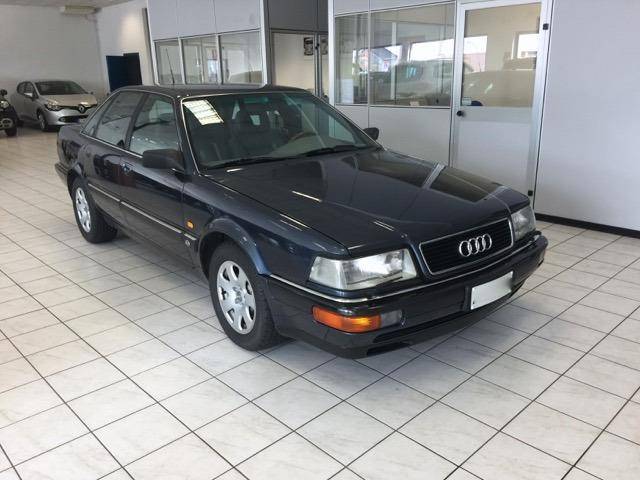
1994 | Audi V8 3.6
Rara AUDI V8 quattro tutta tagliandata e certificata Audi service.

1990 | Audi V8 3.6
V8
Create search alert
Let yourself be notified as soon as a listing is published that matches your search filters.
History of the Audi V8
Launched at the Paris Motor Show in 1988, the Audi V8 introduced a new level of engineering for Audi. Together with full-time quattro all-wheel drive, the V8 arrived exclusively with a 3.6-litre, 32-valve, all-aluminium V8 producing 250 hp. The car also set new standards for rust protection with its fully galvanised steel body. By 1992, a more potent 4.2-litre, 280 hp unit was available, each embracing overhead camshafts and advanced electronic controls. The model's robustness, paired with plush appointments such as leather seating, air conditioning, and BBS wheels, cemented Audi’s place among luxury car manufacturers. Production of the Audi V8 concluded in 1994, replaced by the all-new Audi A8.
Model Lineage and Evolution
The Audi V8 was built on the underpinnings of the Audi 100/200 (Typ 44), yet, it was a distinct leap into the luxury sector. Its direct predecessor in the Audi range was the high-end Audi 200; its successor was the Audi A8, which launched in 1994 with an even greater focus on lightweight aluminium construction and advanced technology. In addition to standard saloons, the long-wheelbase 'V8 L' extended the offering between 1991 and 1994. Approximately 21,000 units of the D11/TYP 4C Audi V8 rolled off the production line.
Highlights and Market Data
The Audi V8 brought together several pioneering features: permanent quattro drive, sophisticated V8 engines made from aluminium, galvanised bodies, and a high standard of luxury interior equipment. The car was the first in its class to marry V8 power with all-wheel drive and an automatic transmission in a robust saloon body. Motorsport versions, entered in the DTM (German Touring Car Championship), further demonstrated the engineering capabilities of the V8, taking multiple podiums with its unique combination of four-wheel drive and powerful V8 engine.
Technical Data
Special Editions and Collectible Models
From late 1991, the Audi V8 'Exclusiv' special edition was offered, initially featuring unique light alloy wheels and (for the first time) the more powerful 4.2-litre engine. Additionally, around 245 units of the Audi V8 L long-wheelbase models were produced between 1991 and 1994, extending overall vehicle length by 31 cm and available with both the 3.6 and 4.2-litre engines. Racing enthusiasts should note the Group A DTM versions, which were purpose-built for motorsports and equipped with a 3.6-litre engine and six-speed manual gearbox.
Weak Spots and Common Issues
Despite the mechanical robustness of the Audi V8, prospective buyers should pay attention to the following areas: electrical systems (as is common for late 1980s and early 1990s luxury vehicles), automatic transmission function, and cooling system leaks. Aluminium engines and sophisticated suspension setups demand proper maintenance; rust is rarely an issue thanks to galvanisation, but verifying body integrity is still essential. High spare-part costs and limited availability for some trim pieces can add to upkeep. Check service history, especially for camshaft and timing belt replacement on high-mileage cars.
Engine, Transmission and Driving Dynamics
The 3.6-litre V8 accelerates from 0–100 km/h in 7.9 seconds, while the 4.2-litre brings that time down to 6.8 seconds. Both powertrains deliver their output to all four wheels through Audi’s signature quattro system, with manual and automatic options depending on engine version and production year. The aluminium V8 engines are smooth and responsive, harmonising with the dynamic yet comfort-focussed chassis. Despite the upper-class comfort, the V8 manages direct steering and solid cornering, setting itself apart from more softly sprung contemporaries from competing brands. Noteworthy:
- Audi V8 3.6 (250 PS, manual or automatic, all-wheel drive)
- Audi V8 4.2 (280 PS, manual 6-speed or automatic, all-wheel drive)
- Audi V8 L (long-wheelbase, rare, both engine options)
- Group A DTM race version (3.6-litre V8, 6-speed manual, unique in racing history)
Interior, Comfort, Exterior and Design Features
The D11 Audi V8 was penned for understated luxury rather than flashy theatrics. It featured a streamlined saloon design with subtle flared arches and distinct, yet restrained, Audi grille. Body galvanisation contributed to its durability. Inside, buyers found real leather upholstery, burled wood trim, and advanced-for-its-time gadgets: electronic sunroof, climate control, tinted glass, and the Gamma audio system. BBS alloy wheels, a unique identifier, and extensive noise insulation package provided further comfort. Unusual at the time was the option of warm, dark ‘V8 Exclusive’ interior colours and wood inlays, as well as optional telephone and rear blinds for top-tier models.
Other Information
All Audi V8s qualify for Historic vehicle status in Germany (H-Kennzeichen) under §23 StVZO, which allows for low-tax classic car registration. Due to small production numbers and the technical sophistication of the model, good examples are increasingly rare on the market. The model was a pioneer for the aluminium-A8 that followed and stands as an example of Audi’s ambition in the premium sector.
Summary
The Audi V8, produced from 1988 to 1994, stands out for its advanced technology, full-time quattro all-wheel drive, fully galvanised body, luxury equipment, and powerful aluminium V8 engines. As Audi's first foray into the upper echelons of the luxury segment, it paved the way for the A8 and helped redefine the brand’s reputation. The D11 / Typ 4C remains central to Audi’s classic lineup and attracts those seeking a distinctly engineered German saloon with true collector credentials.